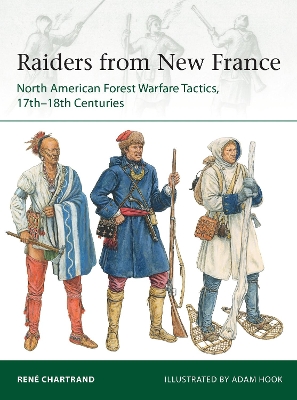Elite
4 primary works
Book 93
The American War of Independence was a milestone in American history. When the governor of Massachusetts sent British soldiers to seize arms and ammunition collected by the colonists the local militia resisted. This was to be the start of an eight-year war which was fought, not just by the British and the Americans, but by the Germans, Spanish and French as well. This book details the appearance, careers and personalities of commanders on both sides. It covers such figures as George Washington and Lord Cornwallis along with some equally interesting, but lesser known, figures such as Admiral Solano and Thaddeus Kosciuszko.
Book 102
This book covers the army that fought the Texans at the Alamo and San Jacinto, and was poised to fight the US in the Mexican-American War of 1846-48. It was far from negligible and on the eve of the latter war a correspondent from the London Times judged it superior to the US Army. That it did not prove to be so was perhaps in large due to the failngs of its major commander during this period, the notorious General (later President) Santa Anna, "the Napoleon of the West".
Book 108
During 1812, Wellington's ability to advance and overcome a numerically superior enemy was due to the constant activity of the Spanish guerrillas that diverted French military resources and attention away from fighting the British. In fact, less than a third of the French force could be tasked with confronting Wellington, the rest being used to counter guerrilla activity, or the threat of it. This book brings to life the formation, tactics and experiences of the Spanish guerrilla forces that fought Napoleon's army. Using much unpublished source material, it forms a vivid description of the events and the people who dictated them.
Book 229
Though the French and British colonies in North America began on a 'level playing field', French political conservatism and limited investment allowed the British colonies to forge ahead, pushing into territories that the French had explored deeply but failed to exploit. The subsequent survival of 'New France' can largely be attributed to an intelligent doctrine of raiding warfare developed by imaginative French officers through close contact with Indian tribes and Canadian settlers. The ground-breaking new research explored in this study indicates that, far from the ad hoc opportunism these raids seemed to represent, they were in fact the result of a deliberate plan to overcome numerical weakness by exploiting the potential of mixed parties of French soldiers, Canadian backwoodsmen and allied Indian warriors.
Supported by contemporary accounts from period documents and newly explored historical records, this study explores the 'hit-and-run' raids which kept New Englanders tied to a defensive position and ensured the continued existence of the French colonies until their eventual cession in 1763.
Supported by contemporary accounts from period documents and newly explored historical records, this study explores the 'hit-and-run' raids which kept New Englanders tied to a defensive position and ensured the continued existence of the French colonies until their eventual cession in 1763.



